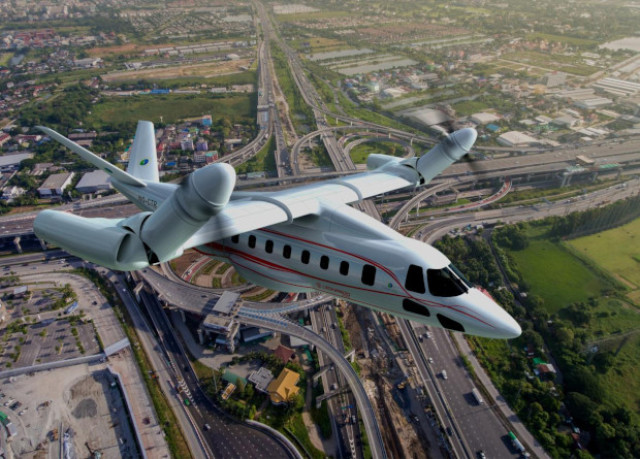In 2023, the European T-Wing Consortium will conduct the first flight tests of the NGCTR-TD passenger tiltrotor demonstrator, which is being developed for inter-city transportation. According to Flightglobal, the developers are currently testing a composite tiltrotor wing in a wind tunnel at the Italian research center CIRA.
The NGCTR-TD tiltrotor is being developed as part of the pan-European Clen Sky 2 program. It involves the creation of new eco-friendly and economical aircraft that could be used, in particular, for passenger transport in cities, between cities, and also between the city and the suburbs. It is believed that such devices will reduce the load on roads in large localities.
For aerodynamic testing, IBK Innovation, a member of the T-Wing consortium, created a 1.2-meter-long composite tiltrotor wing model. The model includes a wing fragment with a movable flaperon. This is the name of the movable control element of the wing, which simultaneously performs the functions of the aileron and flap.
Aerodynamic tests of the wing are carried out in a pipe, in which it is possible to create air flows with different flow rates, as well as simulate icing. The tests are carried out on the DEMOS stand, which allows you to change the spatial position of the wing during the tests, as well as control the flaperon. The wing's aerodynamic tests are expected to last two weeks.
The NGCTR-TD tiltrotor will be created according to the airplane scheme of a high-wing plane with rotary propellers on the wing tips. The device will receive a V-shaped tail. According to the project, the tiltrotor will be able to fly in airplane mode at a speed of up to 280 knots (518 kilometers per hour), and its flight range will be 1,850 kilometers.
Earlier it became known that the European consortium Airbus Helicopters will conduct the first flight tests of the promising high-speed hybrid rotorcraft RACER at the end of 2021. This aircraft is also being developed as part of the Clean Sky 2 program. RACER will be able to reach speeds of up to 220 knots (407 kilometers per hour) and fly over a distance of up to 740 kilometers. The cruising speed of the rotorcraft will be 190 knots.
Vasily Sychev

